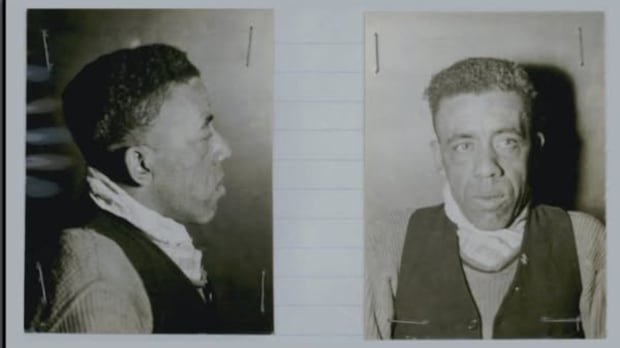In 1935, Daniel Perry Sampson was hanged in Halifax (the city’s last execution under penalty of death) for a crime his family says he did not commit.
Now, 90 years later, there are new efforts to have Sampson officially exonerated.
Sampson was an African Nova Scotian man who served in the No. 2 Construction Battalion during the First World War. He was convicted after allegedly signing a confession in which he admitted to killing two young white men. But attorney David Steeves said there’s something strange about that signature.
The confession was signed with an X, he said, which is how people who couldn’t write signed. However, there are documents showing that Sampson could sign using his full name and that he had learned to read and write while serving in the military.
“He learned to read and write 14 years before he was arrested,” Steeves told CBC Radio. Information tomorrow Nova Scotia.
Steeves says Sampson’s military discharge and marriage papers were signed with his full name.
“The X in that confession seemed very concerning.”
He said a forensic document examiner concluded that the same person who wrote the body of the alleged confession is the same person who wrote the X. Steeves’ theory is that it was not Sampson who wrote that confession.
“[Police] He wanted, I think, an answer for a horrible crime. “But by that time, crime had become racialized and such a horrible crime was often attributed to members of the black community in Halifax,” he said.
Lance Sampson, great-great-grandson of Daniel Sampson, filed a criminal conviction review application on March 7, 2025, the 90th anniversary of Daniel Sampson’s death. The case is now before the federal justice minister and the Criminal Convictions Review Group.
“I’m happy to honor my ancestors in this way. And grateful to be represented by David Steeves, who has dedicated 20 years of his life to this case,” Lance Sampson, known in the music world as Aquakultre, said in a Facebook post.
Steeves said racism “absolutely” played a role in the way the case was handled nearly a century ago.
Sampson was tried by an all-white jury. Steeves explained that back then, Halifax juries came from 10 specific precincts in the city center and South End. Among other criteria, they were required to have a certain income.
“I looked at the tax rolls at the time in Halifax and there were community members in the North End, specifically African Nova Scotians, who had enough assets and could have served on a jury at the time,” he said.
“But there were no African Nova Scotians or black jurors.”
He said there is more than 15 new evidence that points to serious problems in the case against Sampson.
“There are multiple examples of officers lying on the stand. There are documents that were never produced. There are Crown witnesses whose evidence changed several times. They were completely unreliable and yet none of this was ever available to Daniel’s defense lawyer,” he said.
In fact, Steeves is not convinced that the children were killed in an act of violence. He believes the two children died after being hit by a train while picking berries near the tracks.
“It’s a terrible thing,” he said. “But then blaming someone who wasn’t even in the area is horrible and terrible and a huge miscarriage of justice.”
MORE TOP STORIES









